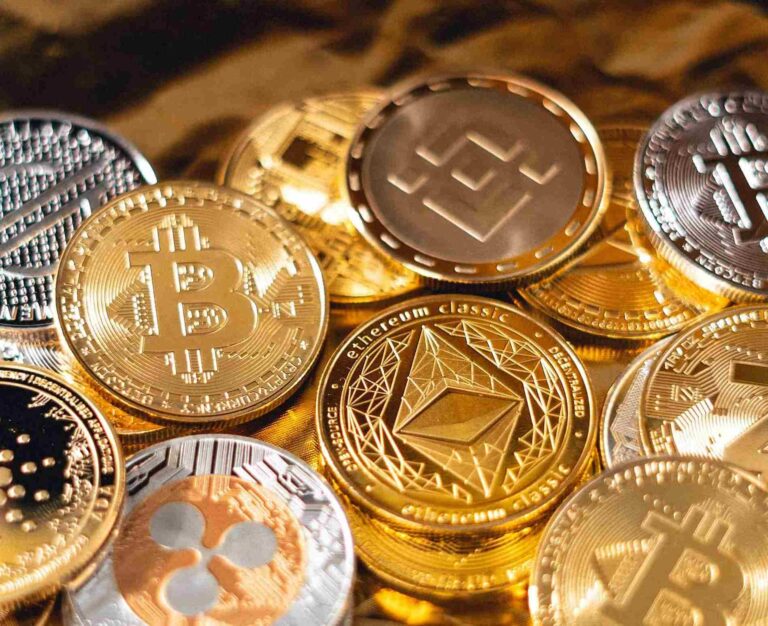With the widespread adoption of cryptocurrency, the number of coins and tokens is also increasing drastically. From seven cryptocurrencies in April 2013 to more than 23,000 cryptocurrencies in March 2023, their number has exponentially increased in the past years.
But how many cryptos are there in 2023? What are the various types of crypto coins and tokens? What led to this exponential growth of the cryptocurrency industry? Let’s explore!
Table of Contents
How many cryptocurrencies are there in 2023?
Cryptocurrencies have risen from relative obscurity to become a major force in financial markets over the past decade. With more than 23,000 cryptocurrencies now known to exist, it’s no wonder investors are wondering which ones will lead the way and make their money in 2023.
It can be intimidating to have so many alternatives, but it’s vital to understand that many of these cryptocurrencies are essentially “dead” coins that serve little use other than to generate revenue for their creators. Discounting many “dead” cryptos leaves only around 8,832 active cryptocurrencies. That means investors need to be selective and research any cryptocurrency they consider investing in before making a decision.
Among the 8,832 active cryptocurrencies, some have emerged as potential industry leaders due to their innovative use of blockchain technology and potential real-world applications. Ethereum, Litecoin, Dash, and Monero are just a few examples of cryptocurrencies that have established themselves as market favorites in 2023.
Read more: FTX returns: the crypto exchange recovers $7.3 billion and plans to restart
Types of cryptocurrencies in the market
With so many different types of crypto in the market, it is important to understand the different types and how they are used. Let’s explore the different types of cryptocurrencies available in the market today.
1. Exchange tokens
Exchange tokens are used to facilitate the trading of cryptocurrencies on an exchange. These include tokens such as Binance Coin (BNB) and Kucoin Shares (KCS). While these tokens don’t offer any direct utility, they are attractive to traders who wish to reduce their trading fees when trading on the respective exchanges.
2. Utility tokens
Utility tokens, like Ethereum (ETH) and Tezos (XTZ), are intended to be utilised within a particular product or service and frequently grant access to specific platform capabilities. These coins are usually run on their own blockchain and provide incentives for people to use them.
3. Security tokens
Security tokens are essentially digital versions of traditional securities such as stocks and bonds. These tokens are heavily regulated, meaning that they must meet certain criteria before being issued. They provide a range of benefits over traditional financial instruments, including greater liquidity, faster settlement times, and lower costs.
4. Stablecoins
Stablecoins are cryptocurrencies designed to maintain a stable price and low volatility. The most popular type of stablecoin is the USD-backed Tether (USDT). These coins are intended to be used as a secure medium of exchange and store value.
5. Privacy coins
Privacy coins, also known as ‘anonymous’ cryptocurrencies, are designed specifically for privacy-conscious users. These coins use advanced cryptography and privacy protocols to ensure that user transactions are completely anonymous. Examples of privacy coins include Monero (XMR) and Dash (DASH).
6. Payment coins
Payment coins are cryptocurrencies used specifically for making payments or transferring money between different people. The most popular payment coin is Bitcoin (BTC), although there are other coins, such as Litecoin (LTC) and Ripple (XRP).
7. NFTs
Non-fungible tokens, or NFTs, are digital assets that represent unique items such as artwork, collectibles, and real estate. These tokens are not interchangeable like cryptocurrencies, meaning that each one has its own unique characteristics. Examples of NFTs include CryptoKitties and Decentraland.
8. DeFi tokens
Decentralized finance (DeFi) tokens are used to provide access to decentralized lending, trading, and asset management protocols. Examples of popular DeFi tokens include Aave (AAVE) and Compound (COMP). These tokens usually provide users with a range of benefits, such as discounted fees and increased liquidity.
Factors behind the dramatic growth in the number of cryptocurrencies
The rise of cryptocurrency has been nothing short of remarkable – from its humble beginnings as a small-scale experiment to its current status as an increasingly mainstream financial instrument, it’s clear that cryptocurrencies have changed the landscape of finance. But what factors have driven this remarkable growth?
Transparency and distributed ledger technology are some of the most significant drivers of the market. This decentralized system of record-keeping makes it easier for investors to review transactions and adds an extra layer of security to their assets. Similarly, venture capital investments in cryptocurrency projects have provided a much-needed boost to the industry’s legitimacy and development.
Economic conditions such as inflation, interest rates, and unemployment can also affect the crypto market and technological developments such as new cryptocurrencies or improvements to blockchain technology.
Of course, demand and supply, competition, and social media hype all come into play too – when a cryptocurrency enjoys a huge spike in demand, investors tend to take notice. The same goes for prices: if more coins offer the same utility, then the supply will increase and demand will go down.
The growth of cryptocurrencies has been driven by a complex combination of factors – from technological advancements to economic conditions and venture capital investments. It’s likely that this trend will continue as new developments emerge and opportunities arise. In order to stay ahead of the curve, it is crucial for investors to stay up to date on the newest news and developments in the world of cryptocurrencies.
Read more: The best cryptos for long term investments in 2023












